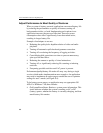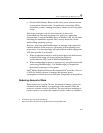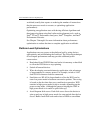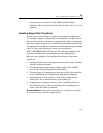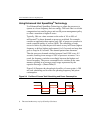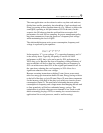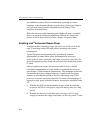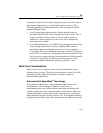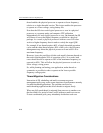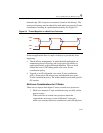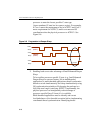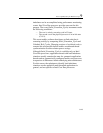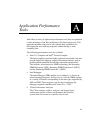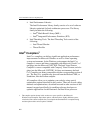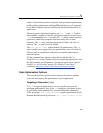
IA-32 Intel® Architecture Optimization
9-16
thread enables the physical processor to operate at lower frequency
relative to a single-threaded version. This in turn enables the processor
to operate at a lower voltage, saving battery life.
Note that the OS views each logical processor or core in a physical
processor as a separate entity and computes CPU utilization
independently for each logical processor or core. On demand, the OS
will choose to run at the highest frequency available in a physical
package. As a result, a physical processor with two cores will often
work at a higher frequency than it needs to satisfy the target QOS.
For example if one thread requires 60% of single-threaded execution
cycles and the other thread requires 40% of the cycles, the OS power
management may direct the physical processor to run at 60% of its
maximum frequency.
However, it may be possible to divide work equally between threads so
that each of them require 50% of execution cycles. As a result, both
cores should be able to operate at 50% of the maximum frequency (as
opposed to 60%). This will allow the physical processor to work at a
lower voltage, saving power.
So, while planning and tuning your application, make threads as
symmetric as possible in order to operate at the lowest possible
frequency-voltage point.
Thread Migration Considerations
Interaction of OS scheduling and multi-core unaware power
management policy may create some situations of performance anomaly
for multi-threaded applications. The problem can arise for
multi-threading application that allow threads to migrate freely.
When one full-speed thread is migrated from one core to another core
that has idled for a period of time, an OS without a multi-core-aware
P-state coordination policy may mistakenly decide that each core



